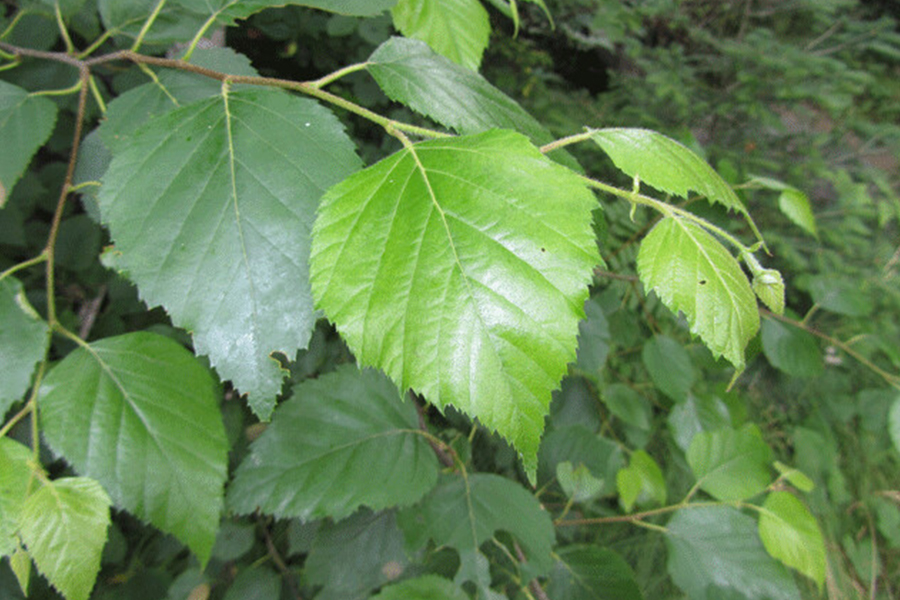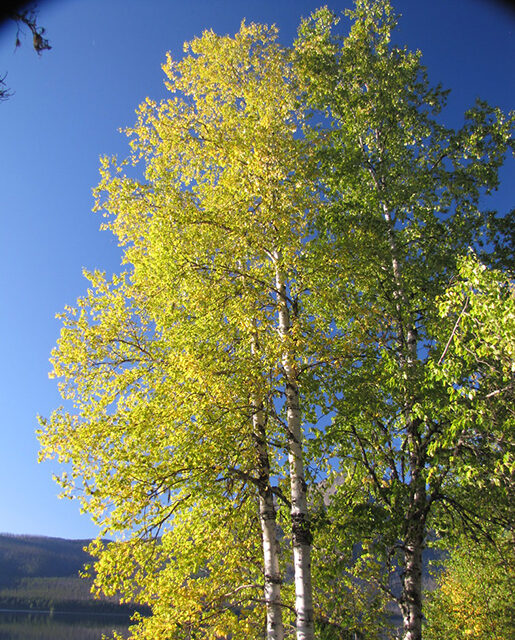Betula papyrifera
Commonly seen in the understories of New England forests, the paper birch is known for its white paper-like bark.
Location
You’ll find paper birches all over the arboretum. They stand out due to their bright white bark. See if you can spot any as you’re walking up Hadwen Hill towards the community garden.


History at Hadwen
Records document Birch trees on the property since at least 1900. Hadwen lectured that he found all of the birches to be graceful trees: “They have a graceful sweep and peculiar flutter in the breeze. Many are indigenous to New England, and thrive in the northern latitudes.” We have records of Hadwen planting some on the property, including one that was forty feet high and two feet in diameter by the early 1900s.
Keep Learning
Detailed Species Information
The paper birch is a deciduous tree in the family Betulaceae native to North America. The paper birch typically grows 70–80 feet (21–27 meters) in height and 1–3 feet (0.3–0.9 meters) in trunk diameter. Mature paper birch trees have thin, white, papery bark and dark green, serrated, pointed leaves. The tree produces catkins in the spring containing large numbers of small winged seeds. Because of the quantity and wind dispersal method of paper birch seeds, it is considered a pioneer species and is often early to colonize an area after a disturbance such as a fire or clear-cutting.
Paper birch is primarily found in the cooler, northern regions of North America and grows best in well-drained and even moderately dry soils. The tree plays a vital role in the ecology of these areas as it provides habitat and food for many animals including deer, moose, birds, and many small mammals. Notably, the sap of the paper birch is also a favored food source for yellow-bellied sapsuckers which will drill into bark to retrieve the sap.
The paper birch has significant economic importance. Its wood is used for pulpwood, firewood, and as a source of veneer for furniture and interior finishes. The bark of the tree has been used by Indigenous people for centuries for various purposes such as constructing canoes, wigwams, and baskets. The tree is still planted so that its bark can be harvested today for decorative and artistic purposes. Additionally, the sap of the birch tree can be boiled down to make a lower-sugar syrup similar to maple syrup. In landscaping, paper birch is a popular ornamental tree due to its distinct bark and slender form. This species is also widely used for reforestation efforts due to its ability to colonize disturbed sites.
